Learning to canoe pays off
There is no such thing as a tippy canoe …. only tippy paddlers. Nobody ever says that a bike is unstable while a canoe is 20 times wider and it would be? OK, a bicycle enjoys the gyroscopic effect of the wheels, but that is a detail. Canoeing is just like cycling: you first have to learn it before you can enjoy it. Sometimes you will fall and get wet, but that is part of the process.
Learning to canoe is an exciting journey. It is very satisfying and guarantees a life full of big and small adventures. You discover the world from the water and have access to places that are unreachable to others. But learning to canoe can be overwhelming and challenging. What is a J-stroke? Why do experienced paddlers kneel? What is portaging? What is an eddy? As a beginning canoeist you have a lot to learn. Still you have to go through it because the better you control your canoe, the greater your pleasure.
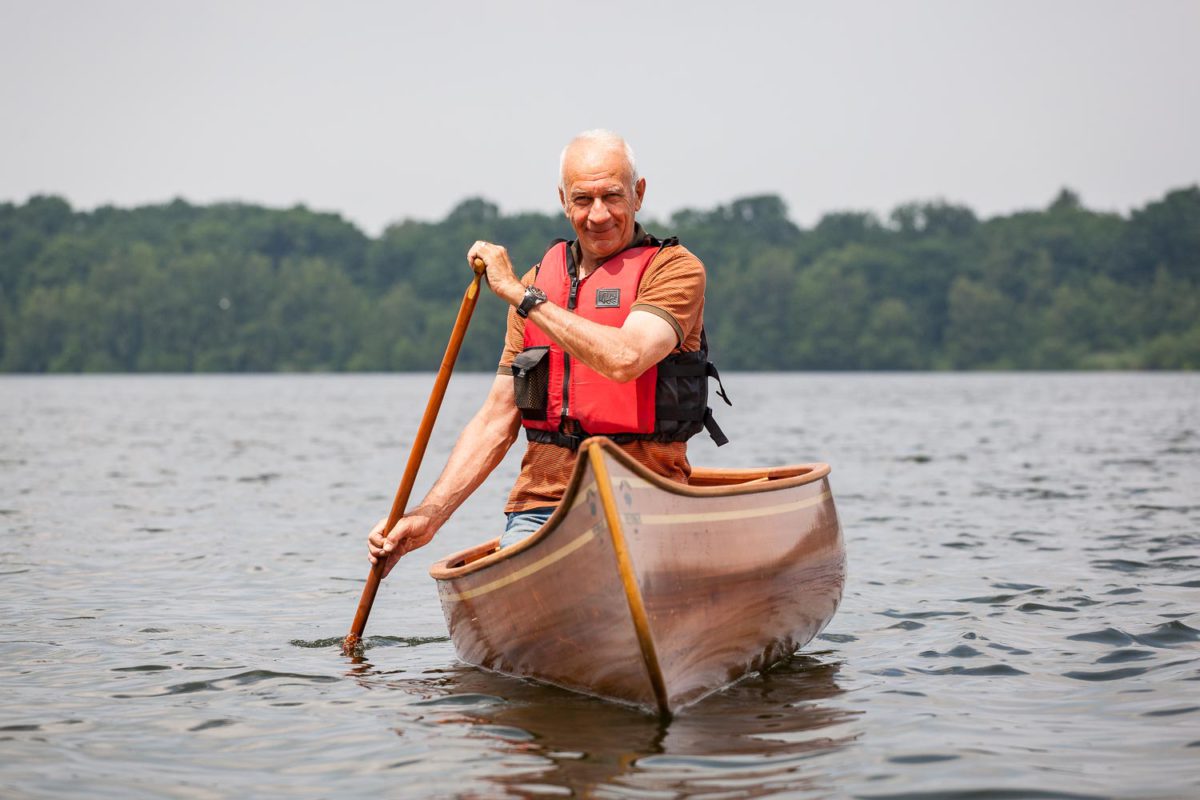
And fun that is what matters! Being blown away by sudden wind or unexpectedly being caught by the current is no fun. These are situations in which you are lost without proper paddle technique. Learning to canoe means that you can keep your head cool in all situations and don’t lose control over your boat. To get your learning process going, here are 10 tips for starting canoeists.
1 Learning to canoe - prepare yourself
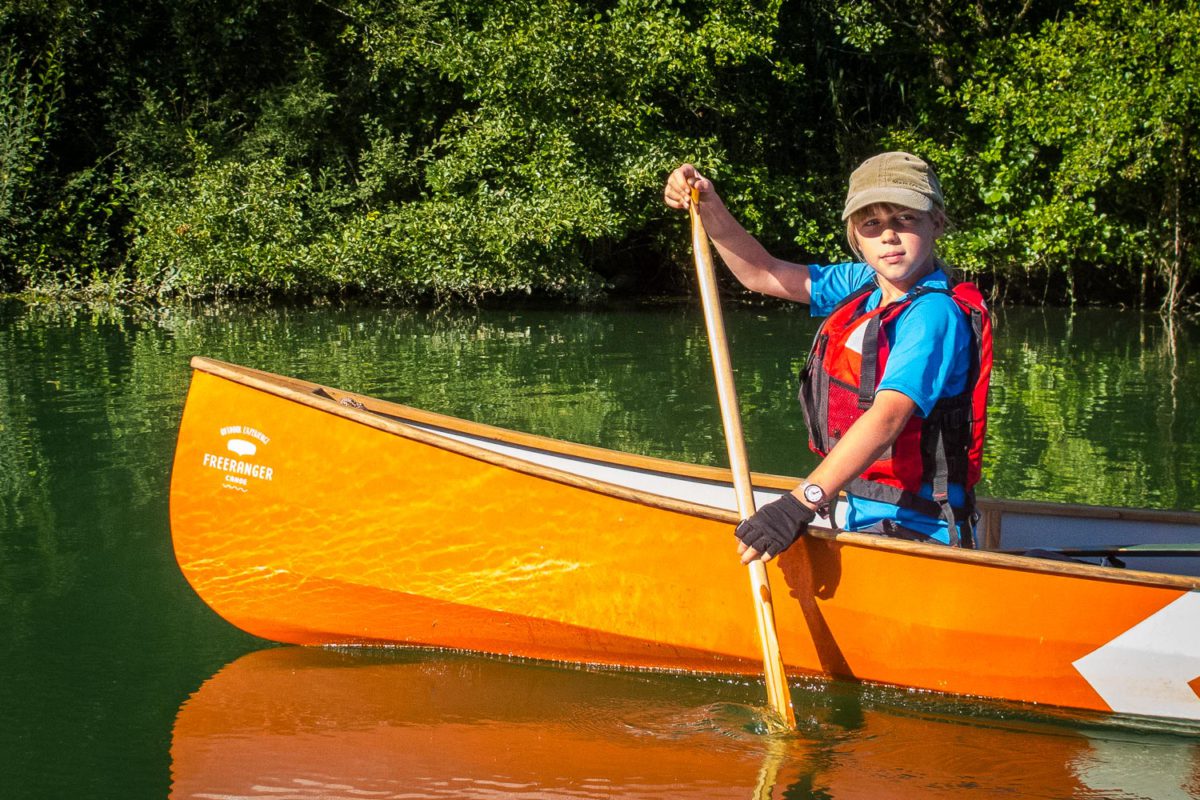
- Always wear a personal floating device.
- Be aware of abnormal weather patterns that may occur later in the day.
- Test the water temperature and dress accordingly.
- Tell others where you are going and when you plan to return.
- Take a mobile phone for emergencies.
- Keep your map in a waterproof cover.
- Prepare your route well and take into account obstacles and portages.
- Avoid open water where wind and waves become a determining factor and pay attention to areas with motorized shipping.
- Put your stuff in waterproof bags.
- Make sure your canoe is equipped with buoyancy bags.
- Always bring a spare paddle and a throw bag rescue rope.
- Make sure you have a whistle to give a sound signal in emergency situations.
- Avoid canoeing at night, if you have to, bring a navigation light.
2 Learning to canoe - dress appropriately
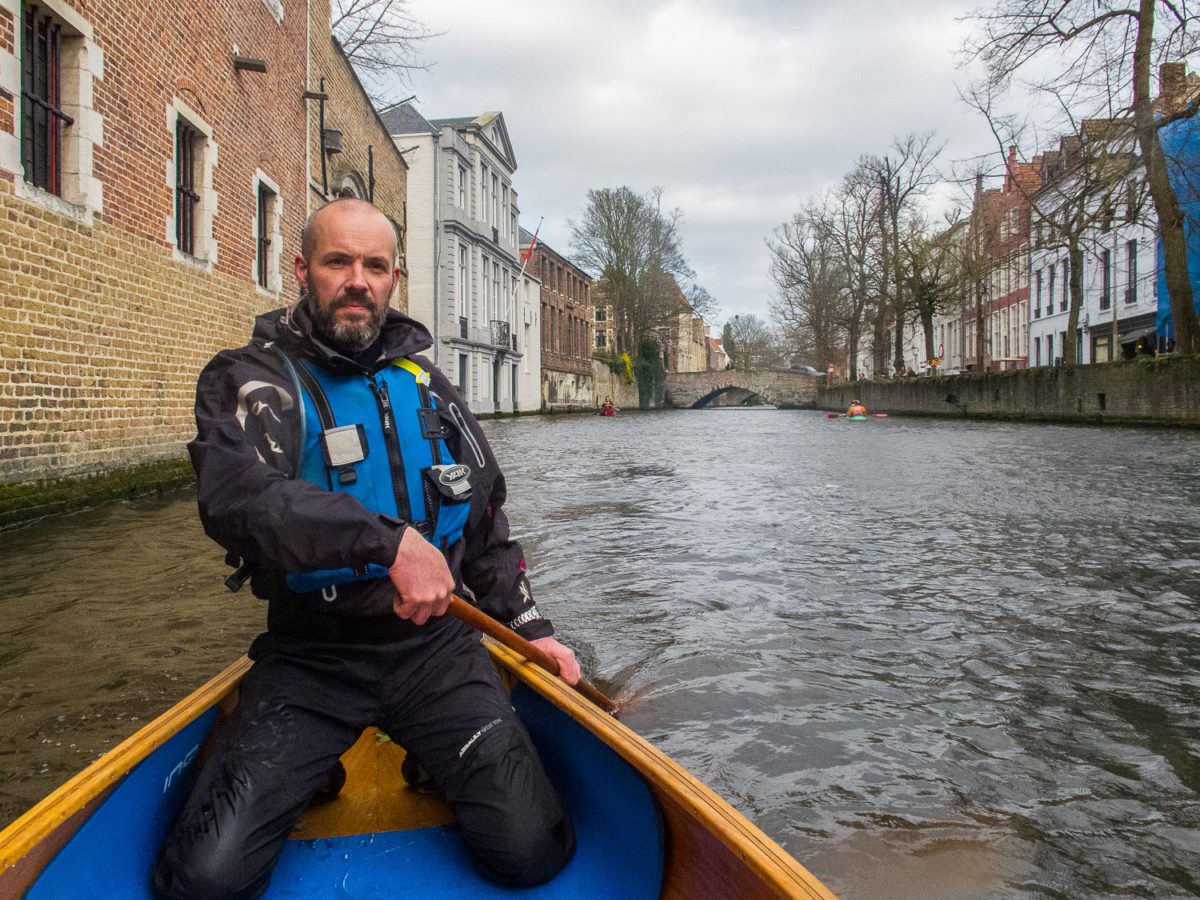
As with all outdoor activities, you have to dress to the circumstances. That means in a layer system. A wide range of specialized canoe clothing is available, both in terms of design and fabric. You will have to choose according to the need. Hot or cold, rain or wind. … Modern outdoor clothing provides insulation when wet and removes moisture from the skin. In cold weather you will always need a windproof jacket, preferably with good seals at neck and wrists. Avoid cotton and opt for wool. Wool is the only material that warms when wet. You better start with too many layers. On the water it is usually easier to take a layer off than to add one. Always bring spare clothing in the canoe in case of emergency.
Wear flexible shoes with sturdy soles. Kneeling down with a stiff shoe is not pleasant. On the other hand, good soles are important when you have to walk over stones or difficult terrain during a portage.
3 Learning to canoe - packing your canoe
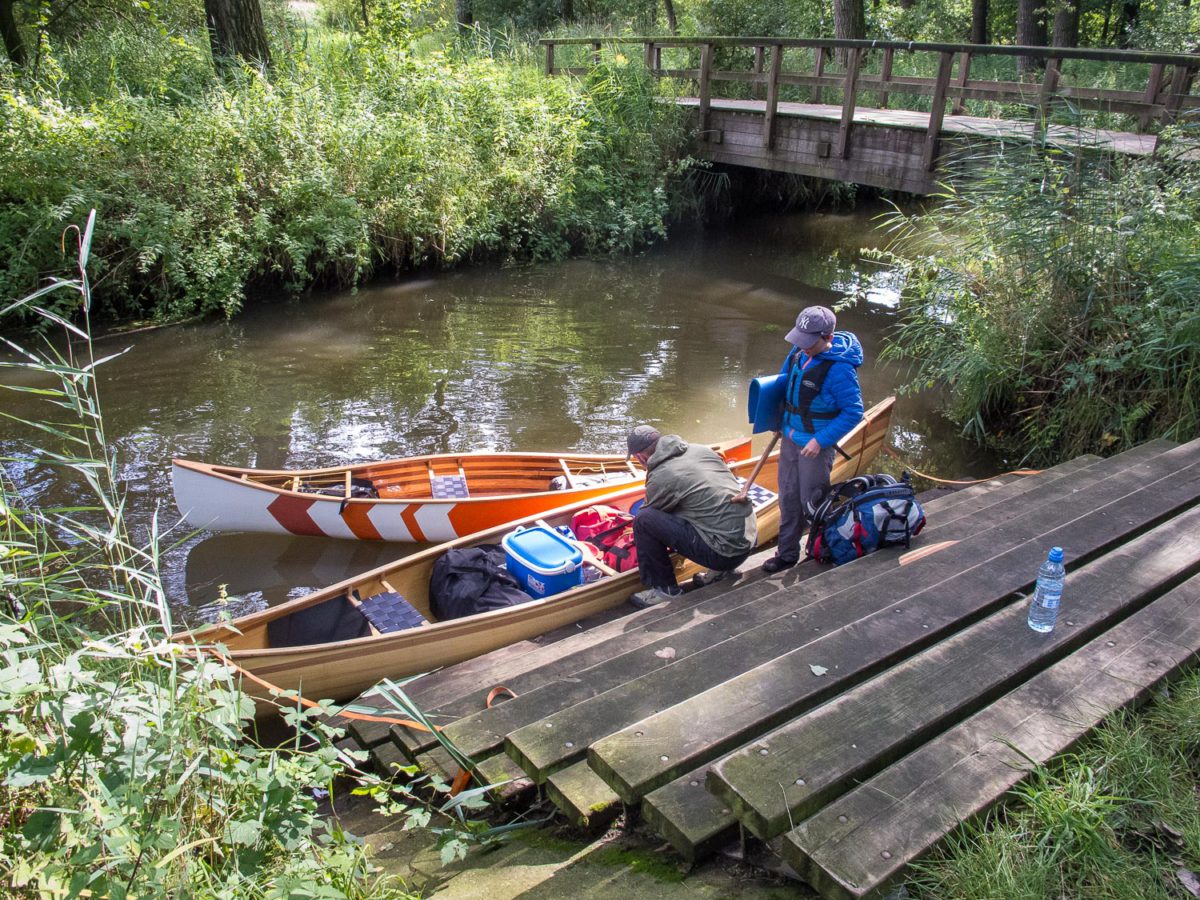
Clothing, camping gear, food and other items are best stored in watertight bags or containers. Several small bags or barrels are better than one large one for ease of loading and because, in case of a capsize, the luggage can more easily be fished out of the water. Store lighter equipment at bow and stern. This makes navigation in waves easier. Heavy objects are loaded lower, and thus amidships. That enhances stability. Cargo must be secured so that it cannot move and affect the trim. It goes without saying that the first aid kit and similar equipment must be easily accessible. Also within easy reach should be maps and GPS, spare paddle, and means of communication.
4 Learning to canoe - getting in your canoe safely
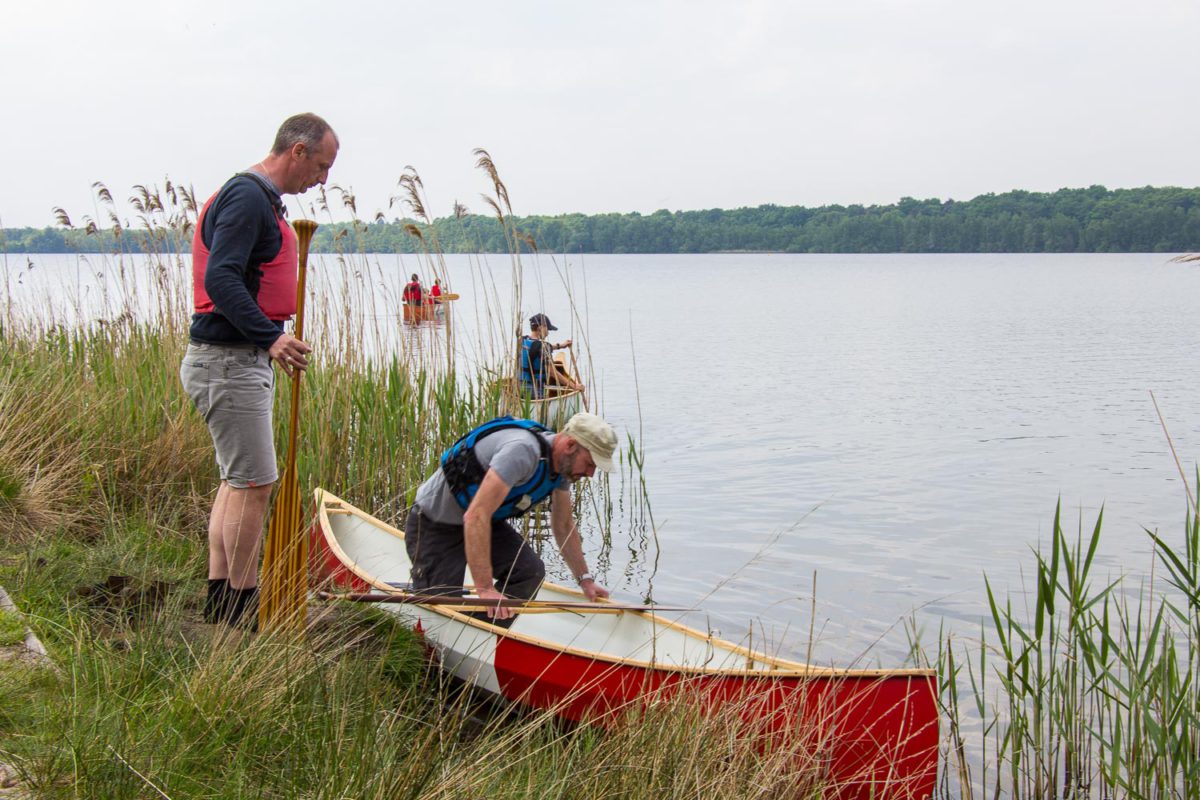
Before you start paddling, you first have to get smoothly and dry into your canoe. The main cause of wet paddlers is inexpert boarding. A canoe is designed to carry a load when it is fully supported by water. It is not a bridge. With one end on shore and the other in the water, a canoe is therefore very sensitive to capsize.
Always place the canoe in the water and preferably parallel to the bank. Place a hand on the nearest gunwale and a foot in the middle of the canoe. Bend low and take the furthest gunwale with the other hand while transferring your weight to the foot in the canoe. Turn your other foot into the canoe and lower yourself to your knees. Stay there until your partner is on board and then take your paddling position. If both paddlers are sitting you can leave. Reverse the procedure when exiting the canoe.
5 Learning to canoe - choose the right paddle
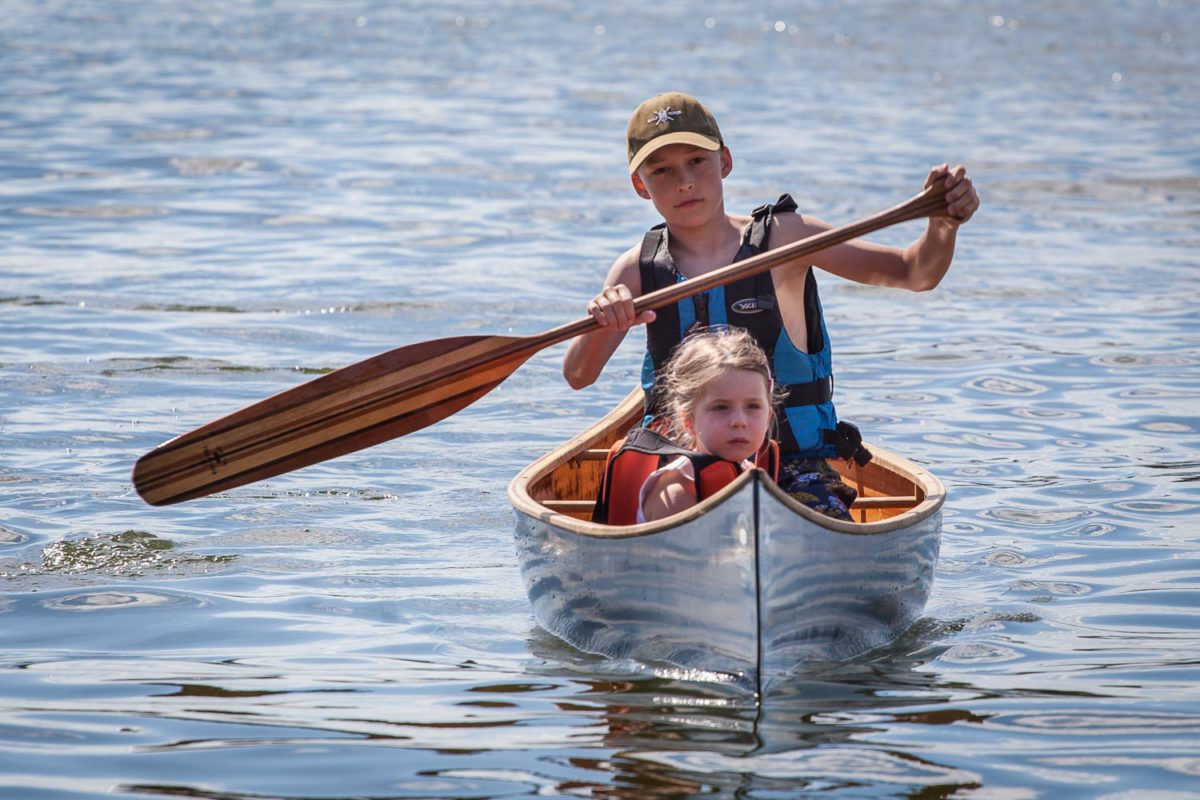
Just like canoes, paddles are available in various shapes and sizes and are made of different materials. Canoe paddles have a single blade and a T- or a pear shaped grip.
Traditional canoe paddles are straight, with flat blades that can be used on both sides. Marathon paddlers use paddles with a bent shaft, for the sit-and-switch technique. The blades can be made of composite or plastic. Cheaper paddles are made of aluminum. Carbon fiber or Kevlar composites are used for quality paddles. Many canoeists still prefer wooden paddles because you hold the paddle in your hands for hours and wood is a warm, comfortable and natural material. For the same reason, paddles should be as light as possible without compromising strength. It pays of to spend some more money on a quality paddle.
Paddles for long trips on flat water are long and narrow with a pear-shaped grip because they stress the muscles and tendons less. If you are canoeing on rivers or whitewater you should use a narrow wide blade with a T-handle to have more catch and control.
6 Learning to canoe - the forward stroke
Canoeing consists of 85% paddling straight ahead. It is therefore essential that you develop the perfect forward stroke that does not burden your arm and shoulder muscles but comes from your core. In essence, your arms remain more or less stretched, making a box, while the stroke is made by means of torso rotation. In addition, you must ensure a good catch. That is the moment when the paddle, as it were, ‘seizes the water’ and makes you move forward.
7 Learning to canoe - the J-stroke
The J-stroke is the absolute basic stroke that you have to master. It is an easy to learn technique that distinguishes the good canoeist from all others. A good J-stroke ensures that you no longer have to change sides with the paddle to keep the canoe on course. The J-stroke consists of ending the forward stroke with a steering correction that keeps the boat on course. The J-stroke is an essential stroke for the stern-paddler in a tandem canoe and for all solo canoeists.
8 Learning to canoe - the low brace
The low brace is the ultimate paddle movement when you are about to capsize. As with the other strokes, the key to the low brace is body movement and certainly not brute force. The back of the blade is placed on the water, with the shaft low and almost horizontal. Keep the wrists straight and the elbows above the shaft. The canoe is pulled straight with a rapid hip movement while the blade rests on the water and gives you support.
Do not try to lift your head first — which is the natural reaction — but bring it up last: boat first, head last.
9 Learning to canoe - rescue techniques
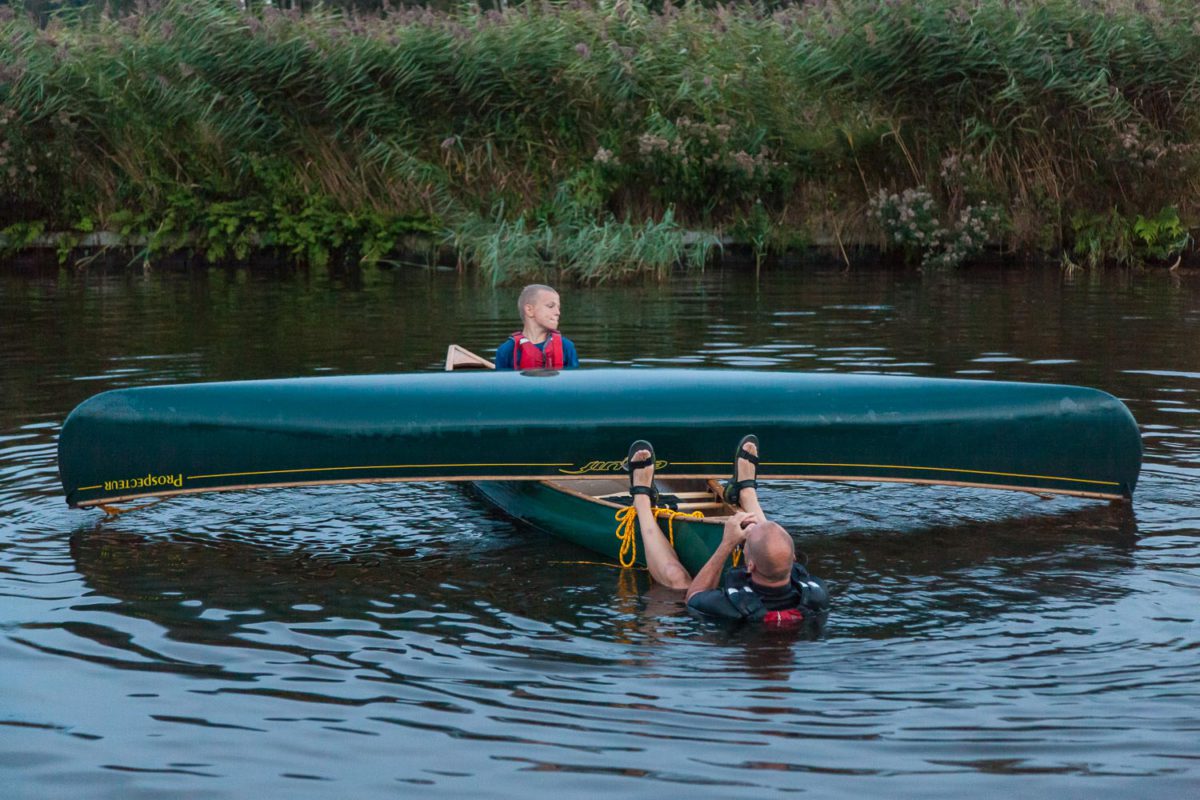
One thing is for certain in canoeing. Sooner or later you will get wet. No one is looking forward to it, but it is good to be prepared and to know a number of rescue techniques for wet situations. To save yourself, but also, and above all, to save others. Paddlers take care of each other and we should all be able to assume that everyone who gets into a canoe thinks alike. It is essential to learn canoe rescue techniques and to know how to respond in emergency situations.
10 Learning to canoe - who’s the boss?
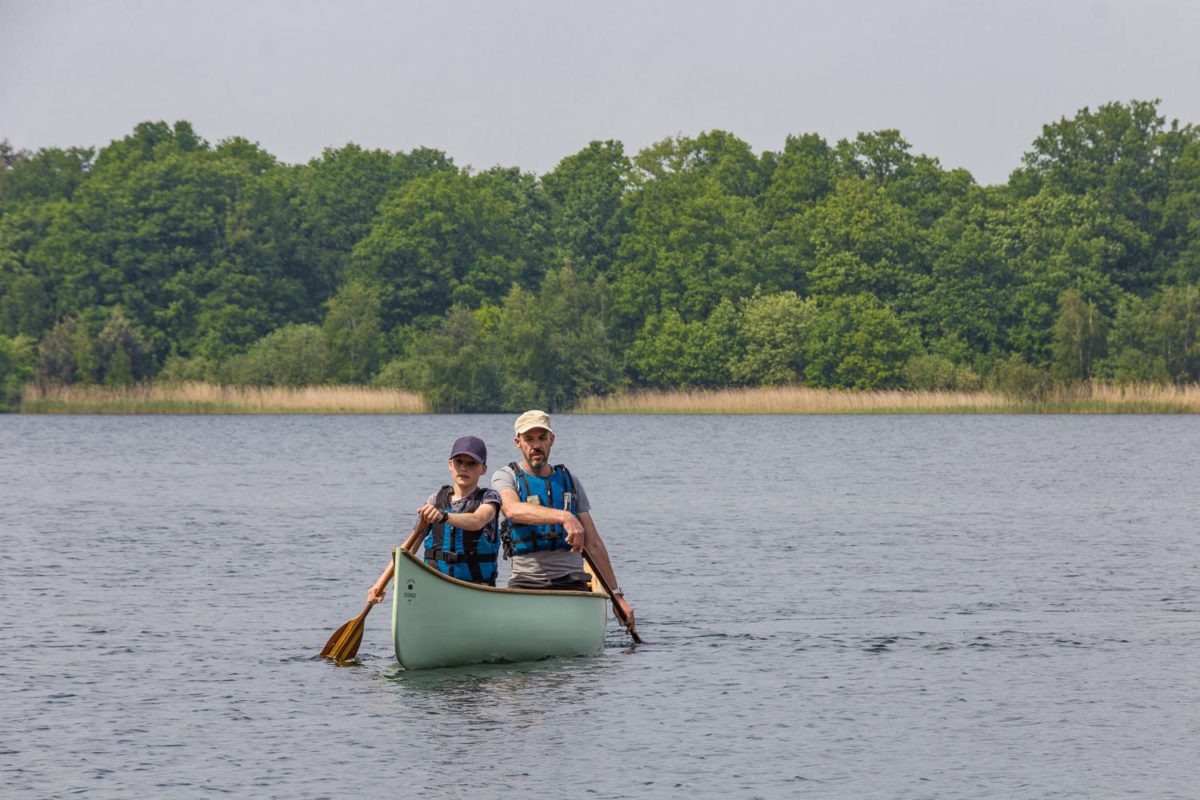
Paddling a tandem canoe is an exercise in cooperation, communication and coordination. Each paddler needs to know what the other is doing, and understand how the canoe will respond to each stroke. Effective teamwork requires practice. The stern paddler has a better overview of the boat and the environment and is better able to give direction and steering. On the other hand, the bow paddler has a better view of obstacles and he can warn and take action. Neither paddler may change sides without warning: the two must paddle on opposite sides to keep balance. They also need to synchronize so that the boat moves smoothly. Initially, most communication will be verbal, but the more you paddle together the more you will respond to each other’s strokes and to the environment and the water.
In practice
Just as you can’t learn to bicycle without help you can’t learn to canoe without expert guidance. If this blog has stimulated your curiosity or has alarmed you in some way, then it’s time to turn to specialists. We ourselves have enjoyed the top instructors of the following organizations:
Canad - Belgium
Armelle and Peter of Canad have been organizing highly instructive courses, workshops and trips for novice and experienced canoeists for over twenty years. Most activities take place in the Ardennes but they also take you on adventures abroad.
Everything starts on flat water with thorough instruction on safety, the most important paddle strokes and all the skills needed to manage the canoe. Gradually you can continue to train with Canad in thematic workshops on rescue techniques, whitewater canoeing and even canoe poling. Every year they also organize a whitewater training course and a lot of guided river descends and canoe trekkings. All activities are guided by highly experienced instructors. If you feel like it, you can join them year round and go on many adventures.
The courses and canoe activities of Canad are not competitive. If you learn to canoe with Canad they will also teach you the trapper lifestyle: respect for nature and safety are central to this.
Canoe & Survival - Germany
The Canoe & Survival team calls itself the ambassadors of ’the beauty of paddling’. And those are not vain words because anyone who saw Frank Münker paddle knows what canoeing version 2.0 looks like.
Canoe & Survival offers three courses:
In the basic solo canoeing course you learn the basics; the different canoes and paddles, the equipment, the different paddle strokes and essential maneuvers. You will also learn to assess potentially dangerous situations and other basic knowledge to paddle safely and confidently.
In the Canadian Style Course you learn to paddle a tandem canoe solo. By making use of a combination of different paddle strokes and maneuvers you succeed in moving the canoe flawlessly in all possible directions. The boat control you acquire on flat water can be applied in all situations.
In the American Freestyle Course you take one step further. In a small solo canoe you execute various paddle strokes and movements both onside and offside. All the time the canoe is trimmed by moving your weight so you can steer your canoe even better and almost effortlessly in all directions.
Canoe & Survival offers courses on the beautiful Biggessee in Olpe (Germany). From 4 persons they also give the courses on location. Moreover, they are present at the major European canoe festivals such as Kringelfieber in Germany, Open Canoe Festival – Drôme in France and the Open Kanofestival in the Netherlands. They also give workshops and demonstrations there.
Herbie Bird - Netherlands
Canoe school Herbie Bird trains beginners but also more advanced canoeists. At the start, the basic techniques are taught profoundly. The philosophy is that the base should be good in order that the paddler can fully enjoy the paddling sport. Mastering new techniques is easier when the foundation is right. Safety is a recurring theme in the lessons. It’s all about the right technique, clearly, but this goes hand in hand with having fun and the experience of nature. Canoeing is a way of living and especially of experiencing. In addition, it is a way to get somewhere and a form of transport. Making bivouacs every night in a different place requires knowledge of packing and the trim of the canoe. This is also a point of attention in the course.
The leading forces behind the canoe school are Rick Kramer, Elize van Witzenburg and Arij van der Kooij. Their passion for canoeing is visible and tangible when you see them in their canoe.
With Rick Kramer, everything revolves around the movement. In his “free” time he teaches children from elementary schools to move. He sees everything in one movement. In this way he can improve the musculoskeletal system so that his pupils feel better and stronger.
Arij van der Kooij has the vocation to make canoeing known to a wide audience. His enthusiasm and pleasure are contagious but “there is still a tough job” as he says it himself. Canoeing seems simple, but it is often a bit disappointing. When the paddler has had instruction, the ease and pleasure comes naturally.
Elize van Witzenburg specializes in solo sailing and also in paddling with children. These can also be children with an extra challenge.

